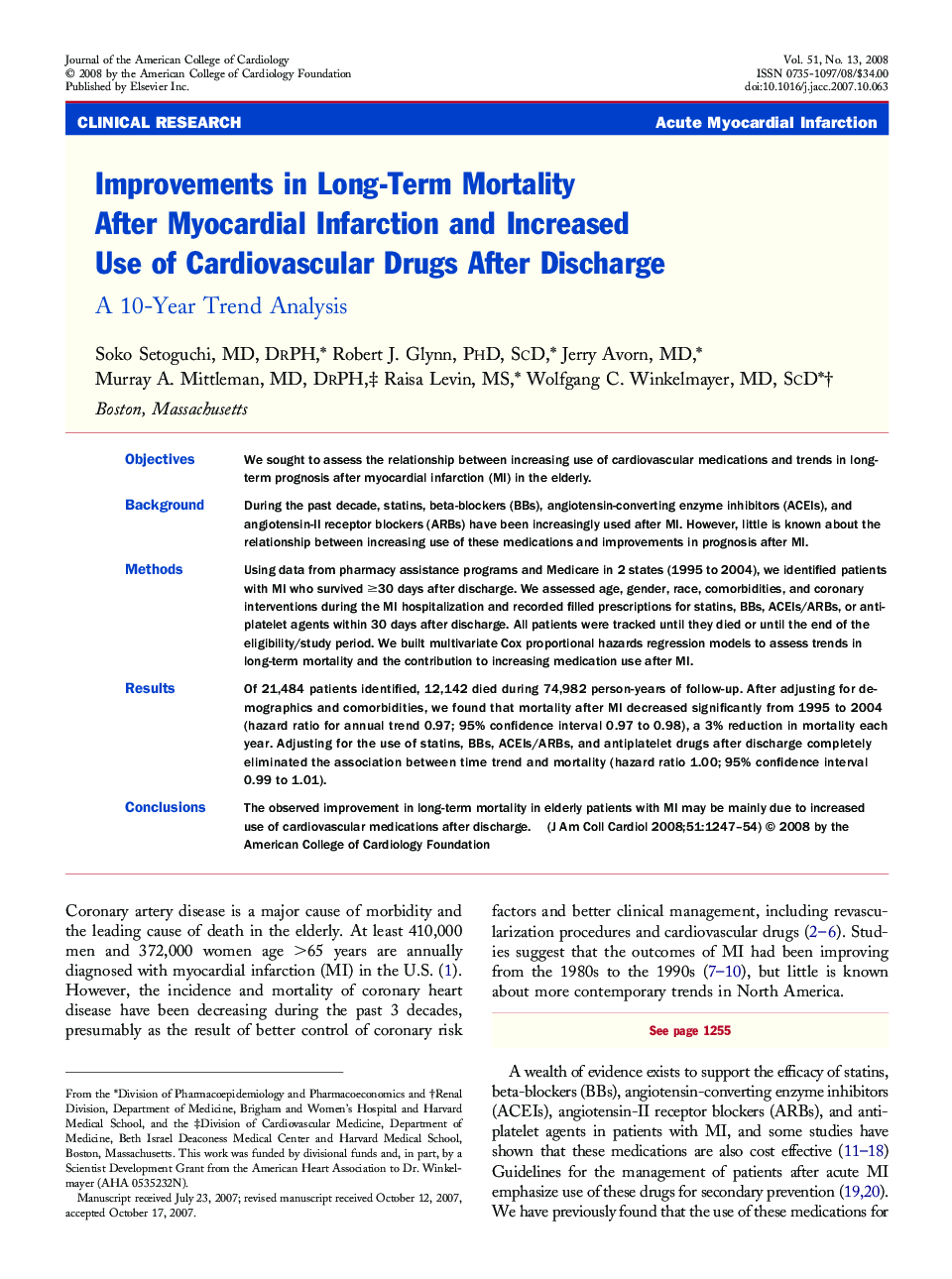| Article ID | Journal | Published Year | Pages | File Type |
|---|---|---|---|---|
| 2953907 | Journal of the American College of Cardiology | 2008 | 8 Pages |
ObjectivesWe sought to assess the relationship between increasing use of cardiovascular medications and trends in long-term prognosis after myocardial infarction (MI) in the elderly.BackgroundDuring the past decade, statins, beta-blockers (BBs), angiotensin-converting enzyme inhibitors (ACEIs), and angiotensin-II receptor blockers (ARBs) have been increasingly used after MI. However, little is known about the relationship between increasing use of these medications and improvements in prognosis after MI.MethodsUsing data from pharmacy assistance programs and Medicare in 2 states (1995 to 2004), we identified patients with MI who survived ≥30 days after discharge. We assessed age, gender, race, comorbidities, and coronary interventions during the MI hospitalization and recorded filled prescriptions for statins, BBs, ACEIs/ARBs, or antiplatelet agents within 30 days after discharge. All patients were tracked until they died or until the end of the eligibility/study period. We built multivariate Cox proportional hazards regression models to assess trends in long-term mortality and the contribution to increasing medication use after MI.ResultsOf 21,484 patients identified, 12,142 died during 74,982 person-years of follow-up. After adjusting for demographics and comorbidities, we found that mortality after MI decreased significantly from 1995 to 2004 (hazard ratio for annual trend 0.97; 95% confidence interval 0.97 to 0.98), a 3% reduction in mortality each year. Adjusting for the use of statins, BBs, ACEIs/ARBs, and antiplatelet drugs after discharge completely eliminated the association between time trend and mortality (hazard ratio 1.00; 95% confidence interval 0.99 to 1.01).ConclusionsThe observed improvement in long-term mortality in elderly patients with MI may be mainly due to increased use of cardiovascular medications after discharge.
